be quiet! Dark Power Pro 11 850W Power Supply Review
Why you can trust Tom's Hardware
Ripple Measurements
To learn how we measure ripple, please click here.
The following table includes the ripple levels we measured on the rails of the P11-850. The limits are, according to the ATX specification, 120mV (+12V) and 50mV (5V, 3.3V and 5VSB).
| Test | 12V (mV) | 5V (mV) | 3.3V (mV) | 5VSB (mV) | Pass/Fail |
|---|---|---|---|---|---|
| 10% Load | 12.8 | 6.5 | 7.3 | 8.2 | Pass |
| 20% Load | 16.5 | 6.6 | 8.4 | 11.4 | Pass |
| 30% Load | 18.6 | 7.6 | 8.6 | 14.6 | Pass |
| 40% Load | 17.1 | 8 | 9.2 | 16.4 | Pass |
| 50% Load | 14.1 | 8.1 | 9.9 | 17.4 | Pass |
| 60% Load | 14.6 | 8.2 | 10.2 | 20.3 | Pass |
| 70% Load | 14.8 | 9.2 | 10.7 | 22.2 | Pass |
| 80% Load | 15.6 | 10.4 | 10.9 | 28.1 | Pass |
| 90% Load | 16.6 | 11 | 11.6 | 28.8 | Pass |
| 100% Load | 17.2 | 11.7 | 12 | 29.5 | Pass |
| 110% Load | 18.6 | 12.2 | 12.2 | 30.8 | Pass |
| Crossload 1 | 16 | 16.7 | 11.8 | 15.8 | Pass |
| Crossload 2 | 17.9 | 10.7 | 12.4 | 19.9 | Pass |

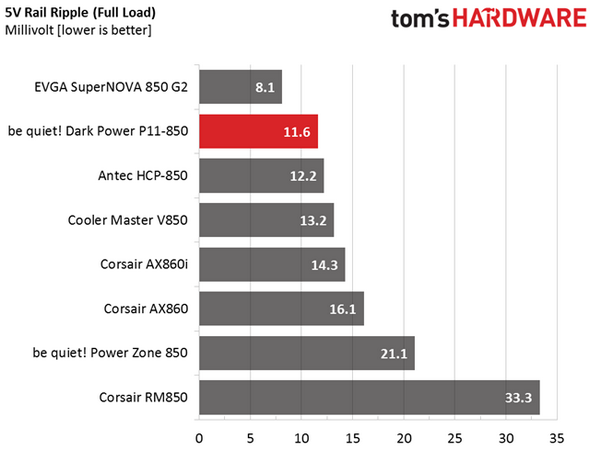


Ripple suppression was superb at +12V and at good levels on the minor rails. The only rail that went above 20mV was the 5VSB rail. However, ripple suppression isn’t so crucial on this rail, since it is mostly used for charging various devices. And the ripple that registered was still much lower than the 50mV limit that the ATX spec sets.
Ripple Oscilloscope Screenshots
The following oscilloscope screenshots illustrate the AC ripple and noise registered on the main rails (+12V, 5V, 3.3V and 5VSB). The bigger the fluctuations on the screen, the bigger the ripple/noise. We set 0.01V/Div (each vertical division/box equals 0.01V) as the standard for all measurements.
Ripple At Full Load

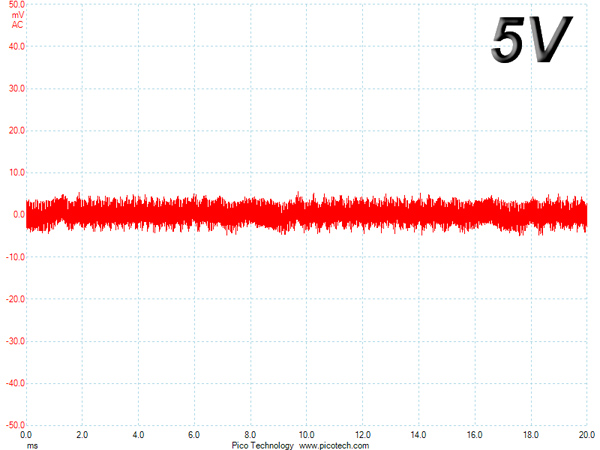


Ripple At 110-Percent Load



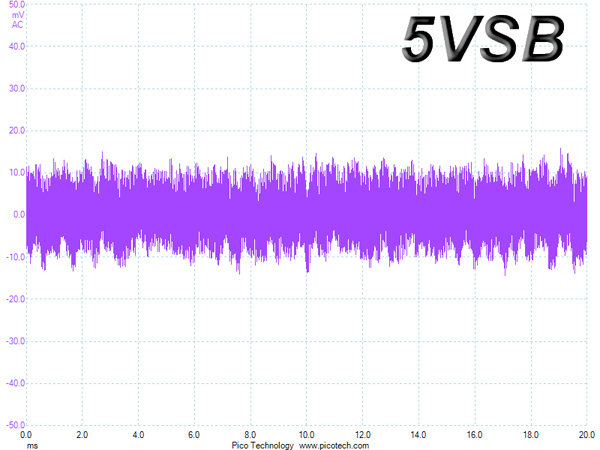
Ripple At Cross-Load 1


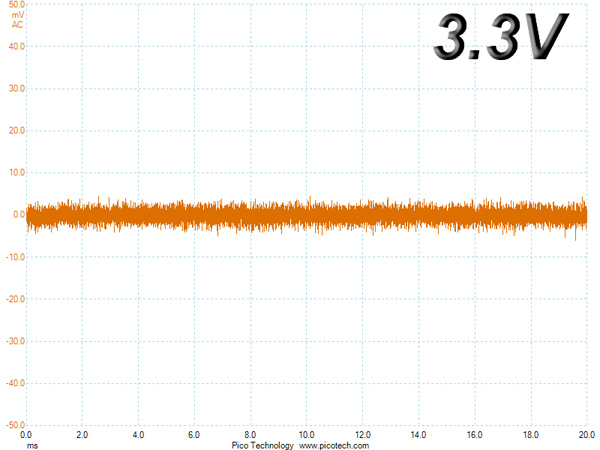

Ripple At Cross-Load 2



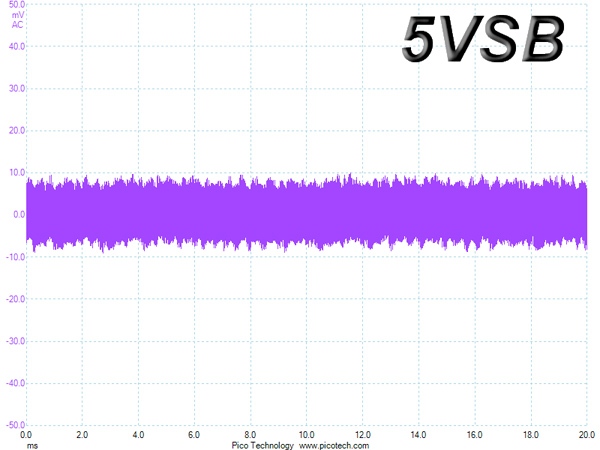
Get Tom's Hardware's best news and in-depth reviews, straight to your inbox.
Current page: Ripple Measurements
Prev Page Transient Response Tests Next Page Performance, Performance Per Dollar And Noise Ratings
Aris Mpitziopoulos is a contributing editor at Tom's Hardware, covering PSUs.
-
Xivilain For lower wattage units, I'd be interested in seeing fanless designs. But it doesn't seem like BeQuiet! is targeting that market, which is sad, because there are lots of HTPC builders out there demanding silence in their living rooms. Anyawy, great review!Reply -
Aris_Mp fanless designs target a very specific market segment mostly because of their increased cost. From the moment you can have inaudible operation at light-mid loads with a proper designed, normal PSU I would highly prefer it especially since it can deliver more power when needed (but with the fan spinning at high enough speeds), than a passive one which will be restricted at 550 - 600 W tops.Reply -
Shankovich ReplyFor lower wattage units, I'd be interested in seeing fanless designs. But it doesn't seem like BeQuiet! is targeting that market, which is sad, because there are lots of HTPC builders out there demanding silence in their living rooms. Anyawy, great review!
I don't see why you cannot have a lower powered unit at 80PG and have the fan run at a low speed. I got a HX750i because I need to give a FirePro W9100 very stable power, but the principle is the same: fan turns on at some higher wattage usage (for me it's 300, but for 80PG I'd say 200 is safer). Even when the fan turns on, can't hear it at all (it has a test button).
If someone makes a 600W PSU that has this kind of fan profile, that would be a score. It won't technically be fanless quite, but the fans won't even get past 15dB for average user power usage, and around 20dB at max settings. Why all this? Will lower the price since a lower efficiency can be used. -
Giannis Karagiannis Since you can have the fan spinning at very low rpm or not at all during light and normal use I can't see a point in having a fanless PSU. During heavy loads, when you need more than 300 watts of power, I believe the noise from the PSU fan would the last thing that would be annoying you.The heat produced be the rest of the system components would be so much that you would need active cooling anywayReply
Another very comprehensive review. Keep up the good work! I would also like to see more reviews for power supplies in the sub-100$ price range. -
dudmont "The prices of the 850, 1000 and 1200W units in the U.S. are $200, $240 and $280, respectively." Yikes!Reply
I'm not convinced that a quieter PSU is where it's at. It's cooling fans that create the big noise, not the PSU and it's fan.
-
Aris_Mp be quiet! informed me that this design/platform was actually designed by one of their engineers and not by FSP, which only helped them build it through their production facilities (since be quiet! doesn't have a PSU manufacturing line).Reply
So in other words be quiet! didn't just bought this platform from FSP but they designed it on their own and FSP just produced it for them.
Until now I wasn't aware of it but now that I am, I wanted to make things right and provide the proper credit to be quiet's engineer that designed this platform (whose name is unknown to me).